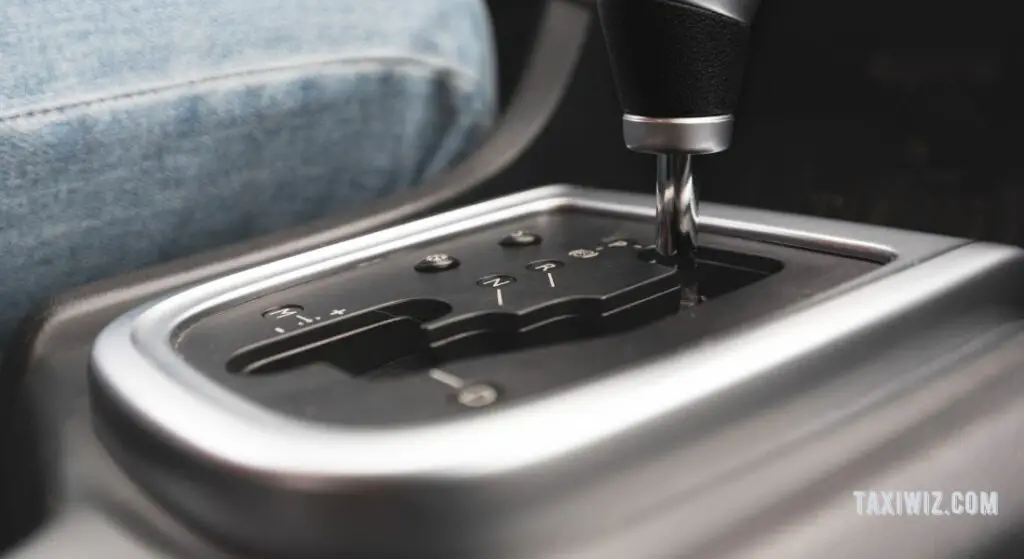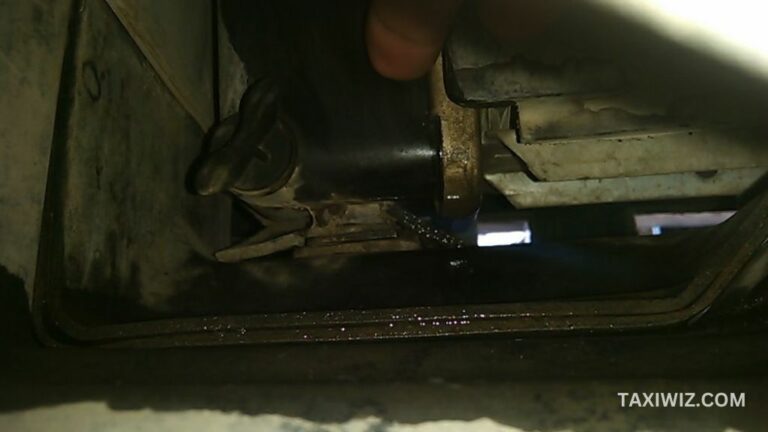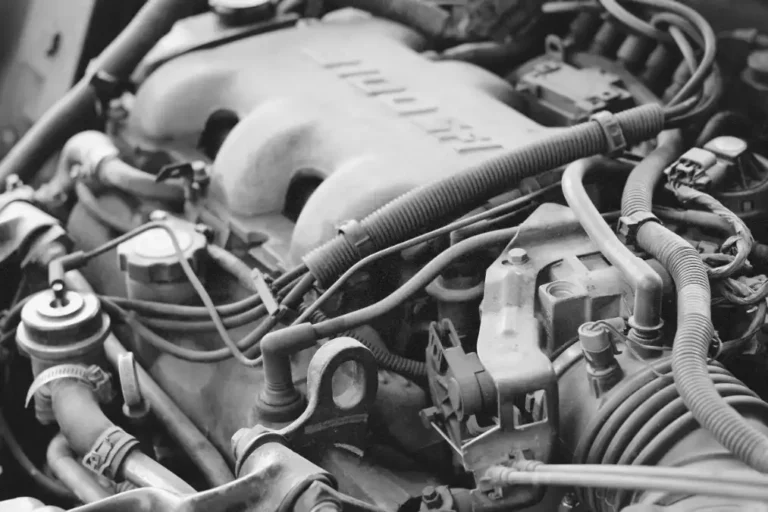Shifter Moves But Doesn’t Change Gears – Causes & What To Do
A gearshift or shifter allows the driver to change between gears, including the park, neutral, and reverse. But like any mechanical part, the shifter is prone to failure and can sometimes move but fail to change gears.
So then, what causes the shifter to move but doesn’t change gears? Typically, this problem occurs because of a loose, stretched, broken, or disconnected shifter cable or linkage. It may also occur due to low or dirty transmission fluid, damaged clutch disc, and defective transmission shift solenoid.
What should you do when the shifter does not change gears? In this guide, we will discuss the causes of this problem, how to fix it, and preventative measures.

Causes and Solutions of Shifter Moving But Doesn’t Change Gears
Below is a quick summary of why your car’s shifter may move but fail to change gears, as well as their solutions.
| Causes | Possible Solutions |
| Loose or Disconnected Shifter Cable | Replace the retaining clips |
| Zip-tie the shifter cables. | |
| Replace the shifter cable bushings | |
| Stretched or Broken Shifter Cable | Adjust the shifter cable |
| Replace the broken cables | |
| Low or Dirty Transmission Fluid | Change the fluid |
| Damaged Clutch Disc | Replace the clutch |
| Faulty Transmission Shift Solenoid | Replace the faulty solenoid |
Troubleshooting Guide For Shifter Moves But Doesn’t Change Gears
In different vehicle models and makes, the shifter may move but fail to change gears for various reasons. The causes of this problem include:
#1- Loose or Disconnected Shifter Cable
The shift cable connects the gear shifter to the transmission. This cable is securely attached to the transmission using retaining clips. These clips may break or snap out, causing the shifter to become loose or go out of adjustment.
Conversely, on the shifter cable ends, you will find rubber bushings connecting the cable and the transmission linkage. These bushings allow for soft-feeling gear changes.
Unfortunately, these bushings may wear out over time, causing the cable to disconnect from the transmission. When this happens, the shifter can move freely but fails to change the gears.
- Solution 1: Replace the Clips
If the retaining clips are broken or missing, the best solution would be to replace them. This will help secure the cables effectively, ensuring proper gear change.
To do so,
- You must detach the cable from the transmission.
- Then, insert the new clips, align them, and reattach the cable.
Depending on your car’s make, the cost of replacing the clips yourself may range from $7 to $10.
- Solution 2: Zip-Tie the Cables
As a temporary solution, you can zip-tie the shift cable back together on the transmission if it’s disconnected. However, this is until you get new retaining clips.
- Solution 3: Replace the Bushings
The cost of shifter cable bushings ranges between $15 and $50, depending on the model of your car. To replace the worn-out bushing, follow the steps below.
- Step 1: Disconnect the shifter cable first from the transmission.
- Step 2: Then, use a flathead screwdriver to remove the old bushings from the cable.
- Step 3: Next, install the new bushings onto the shifter cable and ensure they are aligned.
- Step 4: Reconnect the cable to the transmission and test the shifter.
#2- Stretched or Broken Shifter Cable or Linkage
If a loose or disconnected shifter cable is not the problem, the cause might be a stretched or broken cable. This is common among manual gear transmissions as the shifter is used more regularly than in automatic vehicles.
Over time, the cables usually stretch and break, making it impossible to change gears.
- Solution 1: Adjust the Cable
If the shifter cable is only stretched but not broken, you can try adjusting it. A mechanic would charge you between $30 and $50 for the job. Here is how to do it:
- Step 1: Put the gear shifter in the park.
- Step 2: Locate the shifter cable adjustment.
- Step 3: Loosen the nut on the shift cable adjustment to unlock the cable.
- Step 4: Remove the cable eyelet from the transmission shifter cable.
- Step 5: Ask someone to confirm that the gear shifter is in park mode by moving the shifter rearward.
- Step 6: Tighten the shift cable adjustment screw slightly to remove any slack.
- Step 7: Press down the adjustment clip to lock the shifter cable and test the shifter by moving it through all the gears.
- Step 9: Reattach any console components you may have removed.
- Solution 2: Replace the Shifter Cable
For a broken shifter cable or linkage, you must replace it. The replacement cost ranges between $200 and $600 in parts and labor. Here is how it’s done.
- Step 1: Refer to your car’s manual to locate the shifter cables.
- Step 2: Remove all the necessary parts, like the center console to access the cables.
- Step 3: Disconnect the broken cables from the transmission and shifter mechanism.
- Step 4: Remove the damaged cables.
- Step 5: Install the new shifter cables and secure them with the retaining clips.
- Step 6: Test the shifter through all the gears.
#3- Low or Contaminated Transmission Fluid
Transmission fluid provides hydraulic power to the gearbox, allowing smooth gear change. However, when the fluids are low or contaminated, there won’t be enough hydraulic pressure to initiate the gear change. This may make it hard to shift the gears even if the shifter may still move.
- Solution: Change the Fluid
Changing this transmission fluid is easy, and the average cost ranges from $100 and $700 depending on your car’s make. Check out how to do it.
- Step 1: Use a jack to raise your vehicle off the ground.
- Step 2: Loosen the drain plug on the transmission fluid pan and drain the fluid.
- Step 3: Remove the transmission fluid pan and empty any remaining fluids.
- Step 4: Replace the reinstall the transmission fluid pan.
- Step 5: Refill the transmission fluid and check if the shifter changes all the gears.
#4- Damaged Clutch Disc
In a manual transmission, a lousy clutch disc may cause the shifter to move but not change gears. This is because the clutch disc allows you to disengage power flow to the transmission, allowing you to shift gears.
Unfortunately, the disc may wear over time when used excessively. And when this happens, it may not disengage the power flow. As a result, it can be hard to change the gears even if the shifter can move.
- Solution: Replace Clutch
You should replace the entire clutch to minimize premature clutch failure instead of just the disc. This may cost you anywhere from $750 to $2,500, and here is how it’s done.
- Step 1: Raise the front of your vehicle using jack stands.
- Step 2: Unfasten the engine mount and move the transaxle away from the engine.
- Step 3: Remove the transmission to access the clutch assembly. Then remove the pressure plate and slide out the clutch disc.
- Step 4: Clean or replace the engine flywheel and install the new clutch.
- Step 5: Install a new clutch disc and align it using a clutch alignment tool.
- Step 6: Reinstall all the components you disconnected.
- Step 7: Lower your vehicle on the ground and shift through the gears to check the engagement and disengagement of the clutch.
#5- Faulty Transmission Shift Solenoid
The role of the shift solenoid is to regulate the flow of transmission fluid into and throughout the transmission. It usually receives electrical signals from the transmission control module on when to transfer the transmission fluid. This causes a change of hydraulic pressure, enough to shift gears.
A shift solenoid may become faulty due to dirty fluid or electrical issues. And the most common symptom of a bad solenoid is difficulties changing gears, although the shifter may still move.
- Solution: Replace the Shift Solenoid
The overall cost of replacing the solenoid ranges between $150 and $500 for a single solenoid. To do the replacement:
- Step 1: Drain the transmission fluid in a drain pan.
- Step 2: Remove the transmission fluid pan to drain any remaining fluid and access the shift solenoid.
- Step 3: Remove the damaged solenoid from the transmission using a flathead screwdriver.
- Step 4: Install new shift solenoid and add transmission fluid but don’t overfill.
Watch the video below so you understand better how transmission shift solenoid replacement is done:
Prevention and Maintenance Tips for Shifter Problems
Shifter problems are typical on all vehicle types. So, to prevent these problems, here are some prevention and maintenance tips worth keeping in mind
- Inspect the shifter cables regularly and replace them if you notice any signs of stretching, fraying, or damage.
- Regularly check the condition of your vehicle’s transmission fluid and change it if contaminated.
- Only shift between the forward and reverse gears when your car is not moving.
- Get your transmission fluid flushed regularly and use the correct type of fluid.
- Avoid putting pressure on your car’s brake pedal by frequently slamming down on it.
Conclusion
A vehicle’s shifter is prone to various problems. One common issue is where the shifter moves but doesn’t change gears. This may occur due to a disconnected or loose shifter cable. Sometimes, it may be due to a broken shifter linkage or low or contaminated transmission fluid.
A damaged clutch disc in a manual gear transmission or a faulty shift solenoid may also cause the problem. The good news is there exist many solutions to fixing shifter problems. Even better, there are several tips to help you minimize the chances of most of these problems occurring.
By the way, if problems occur and you can’t handle them, please, consult a professional auto mechanic.



